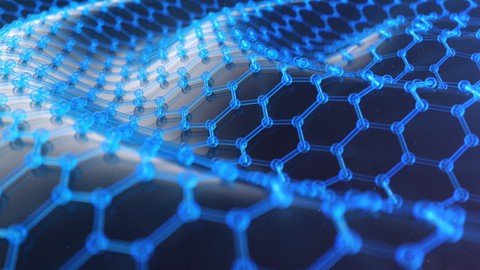Nanotechnology Part 3 Nanomaterials

Published 1/2023
MP4 | Video: h264, 1280x720 | Audio: AAC, 44.1 KHz
Language: English | Size: 644.81 MB | Duration: 1h 25m
Atoms, 0D, 1D, 2D and 3D Materials, Properties, Effects and Functions
What you'll learn
Nanomaterials and properties
Building materials from atoms
Properties of graphene, nanotubes
Applications of nanomaterials
Requirements
No requirements
Description
Materials have broad applications in science and technology. At a small scale, materials achieve quantum confinement of charge carriers: electrons and holes (due to the confinement of the electronic wave function to the physical dimensions of the particles), leading to discrete electronic energy levels. Quantum confinement influences charge carriers in terms of energy levels, potential wells, valence bands, conduction bands, and electron energy band gaps. Nanomaterials represent 0D, 1D, and 2D structures made of atoms. Despite of belief that to observe quantum effects in nanomaterials, their dimensions should be on the order of atoms -- quantum properties appear on much larger scales than individual atoms. For example, quantum dots have sizes of tens of nanometers or consist of thousands of atoms. In this course, you will learn how to build nanomaterials from the smallest building blocks using bonding energy and force, Van der Waals forces, ionic solids, metallic solids, molecular solids, covalent solids, graphene, carbon nanotubes, buckyballs, e-beam deposition, metallic grain structure, stress-strain curves, moldable plastic metals, nano-, and microtubes. The properties of nanomaterials differ from bulk materials. For example, graphene is known as ultra-lightweight, has the highest aspect ratio, the highest electrical conductivity, and the strongest material, with long mechanical durability. It has various applications, such as surface coating, conductive devices, and the creation of molecular networks. In the energy sector, using nanomaterials is advantageous in that they can make the existing methods of generating energy - such as solar panels - more efficient and cost-effective, as well as opening up new ways to both harness and store energy.
Overview
Section 1: Introduction
Lecture 1 Introduction
Section 2: Van der Waals force and gravity
Lecture 2 Theory and calculation
Section 3: Ionic, metallic, covalent solids
Lecture 3 Assembly of materials from atoms
Section 4: Graphene, depositoin, stress strain curved, grained materials
Lecture 4 Properties of nanomaterials
Section 5: Nano- and microtubes
Lecture 5 Properties of nanotubes
Anyone interested in nanomaterials
Homepage
https://www.udemy.com/course/nanotechnology-part-3-nanomaterials/Links are Interchangeable - No Password - Single Extraction



